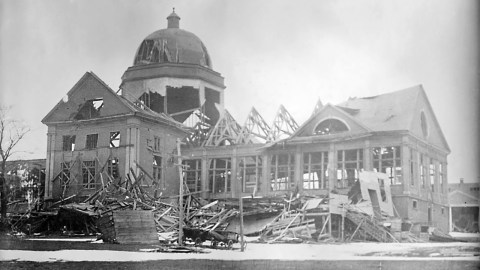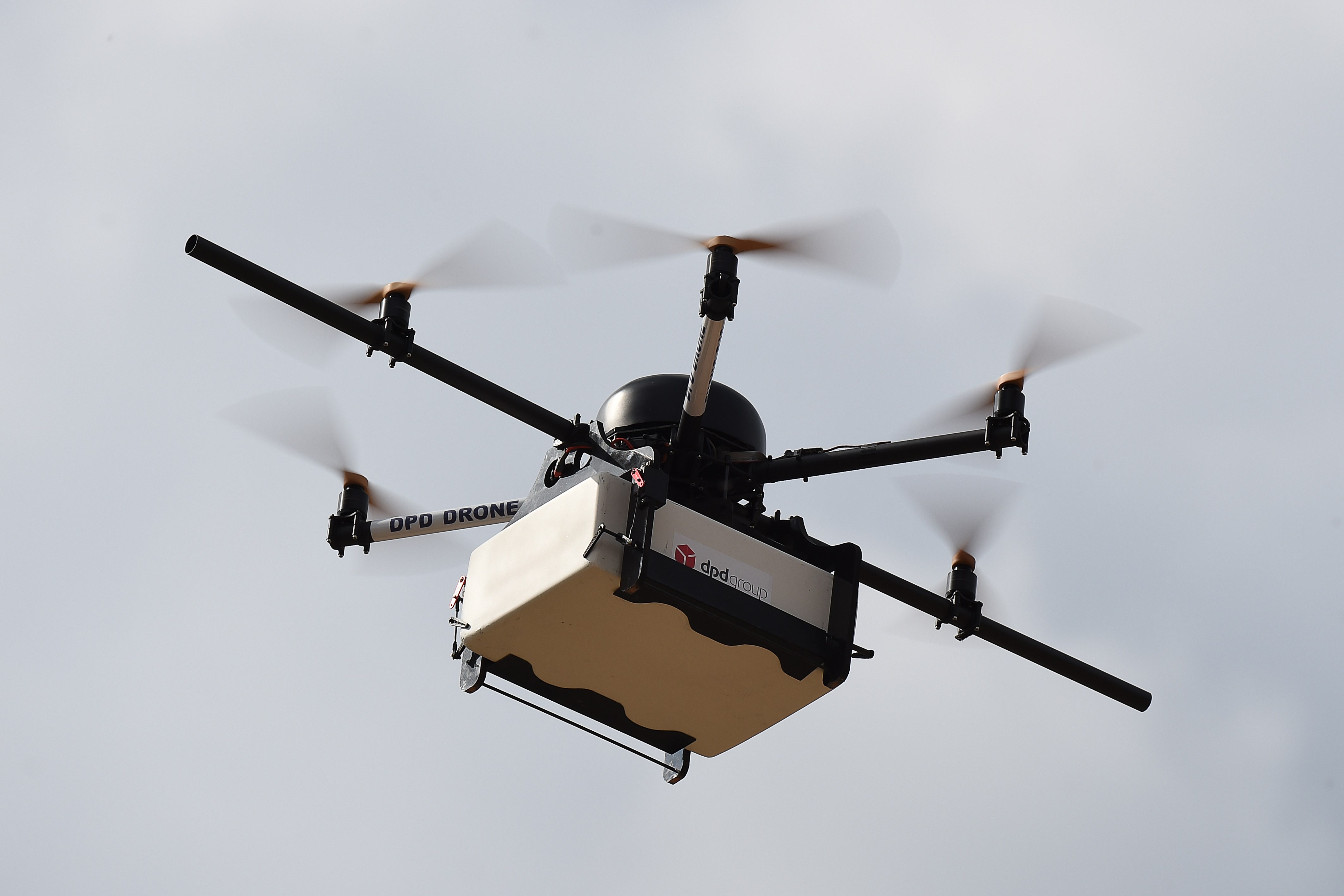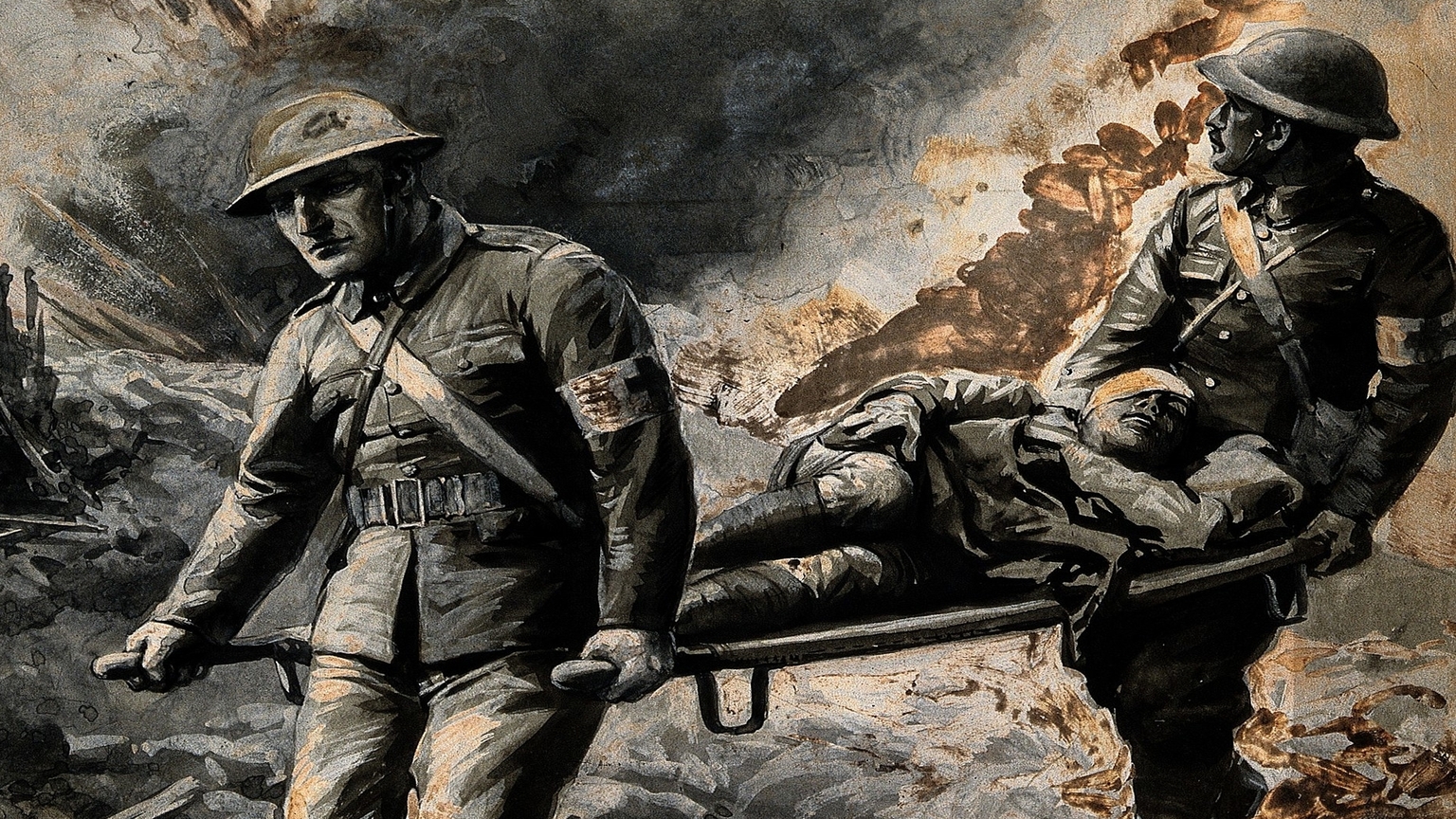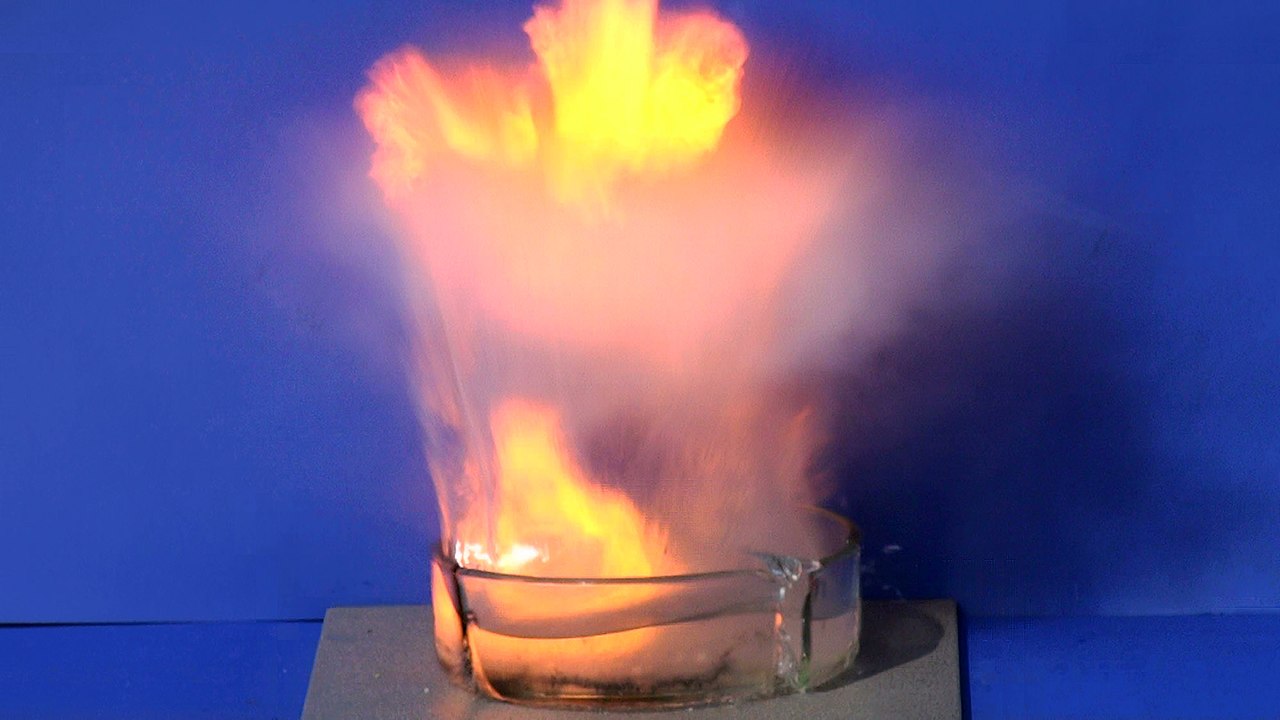The largest accidental explosion of all time

- Accidental, human-caused explosions have occurred numerous times in our history, causing immense pain and suffering.
- None was more disastrous than the Halifax Explosion of 1917, in which a naval collision with a boat carrying explosive materials set off a blast one-fifth the scale of the atomic bomb dropped on Hiroshima.
- Thousands died and the town was decimated. No North American city has faced comparable devastation since.
Humans and our ancestors have been playing with fire for roughly two million years, and over that time, our pyromaniacal ambitions have only grown, occasionally resulting in explosive harm.
Fire, the visible effect of combustion, can be as alluring as it is destructive. Heat releases gases from a fuel source (like wood or oil), which react with oxygen in the air to create even more heat. When this happens extremely fast, lots of stored potential energy almost instantly can be converted to kinetic energy: an explosion. “Planned” explosions are utilized notably in warfare but also in building and mining.
Accidental explosions, on the other hand, can occur when lots of highly combustible fuel is kept in a single location and mistakenly ignited. These volatile mistakes have occurred numerous times in recorded history, with disastrous results, but the worst ever happened a little over a century ago in Halifax, Nova Scotia on the eastern coast of Canada.
The Halifax Explosion of 1917
Two vessels, the French steamship Mont-Blanc and the Norwegian cargo ship Imo, collided in the crowded Narrows strait connecting Bedford Basin to Halifax’s upper harbor on the morning of December 6th, 1917, in the final year of World War I. Although the crash occurred at a sluggish speed of just one knot, the force was enough to topple and rupture a few barrels of benzol, a high-octane fuel made of benzene and toluene, on board the Mont-Blanc. The flammable liquid spilled across the deck and into the hold, which was loaded with explosive materials for the Allied war effort. TNT for armor-piercing shells was on board, as was the French-favored explosive compound picric acid, along with fluffy yet flammable guncotton, which was made by exposing cotton to a mixture of sulfuric acid and nitric acid and commonly used instead of gunpowder in firearms.
When the Imo reversed her engines to untangle the two ships, the scraping of the hulls sent sparks into the air, igniting the benzol and starting a fire that quickly spun out of control. The outmatched crew of the Mont-Blanc had no chance to contain it, so they abandoned ship, warning everyone along the way of the catastrophic cargo and urging them to flee as fast as possible.
About 20 minutes after the initial collision, the explosives in the hold lit up, shredding the ship and triggering a blast wave traveling at 3,300 feet per second. Years later, scientists estimated the explosion at about 2.9 kilotons, one-fifth the explosive force of the atomic bomb dropped on Hiroshima. Every building in Halifax within 1.6 miles was destroyed or severely damaged, and 1,600 people were killed instantly, with at least 9,000 more injured. Remains of Mont-Blanc‘s forward gun were later found 3.5 miles away. A 60-foot tsunami in the harbor grounded most nearby ships.
The aftermath
Firefighter Billy Wells, who had his clothes torn from his body by the blast wave, recalled the devastation: “The sight was awful, with people hanging out of windows dead. Some with their heads missing, and some thrown onto the overhead telegraph wires.”
Medical care was in disarray after the explosion, but doctors from the surrounding region along with a significant contingent of medical personnel from the northeast U.S. quickly flooded into Halifax, which was unfortunately beset by a large blizzard soon thereafter. In spartan conditions, they tirelessly strived to aid the injured. In the ensuing weeks, months, and years, residents of Halifax rebuilt and recovered, always remembering the lives that were lost.
Dr. Preston L. Carter — a general surgeon at the Madigan Army Medical Center in Tacoma, Washington, and the official historian of the North Pacific Surgical Association — expounded on the incident in 2018 and distilled a few lessons.
“In the course of time, official inquiries were convened to analyze the tragedy,” he wrote. “Ultimately, ill-timed luck, human fallibility in marine navigation, and the massive munitions needs of a far off war were judged to be the cause.”
He also worried that few surgeons in North America today may have all the skills necessary to provide emergency care in a “Halifax situation.”
“As surgeons, we should be especially clear-eyed that future disasters on the magnitude of the Halifax Explosion (or in an era of dueling nuclear-capable egos, much worse) would quickly strip away the veneer of today’s highly technology-dependent “minimally invasive” surgical care. In the face of a true urban mass casualty disaster, it is critical that today’s surgeons maintain the skills which will matter after such catastrophes: comfort with generous incisions, damage control prioritization, and fundamental supportive measures appropriate to the resource-limited, austere surgical environment which would inevitably follow in the early days after such a disaster.”





